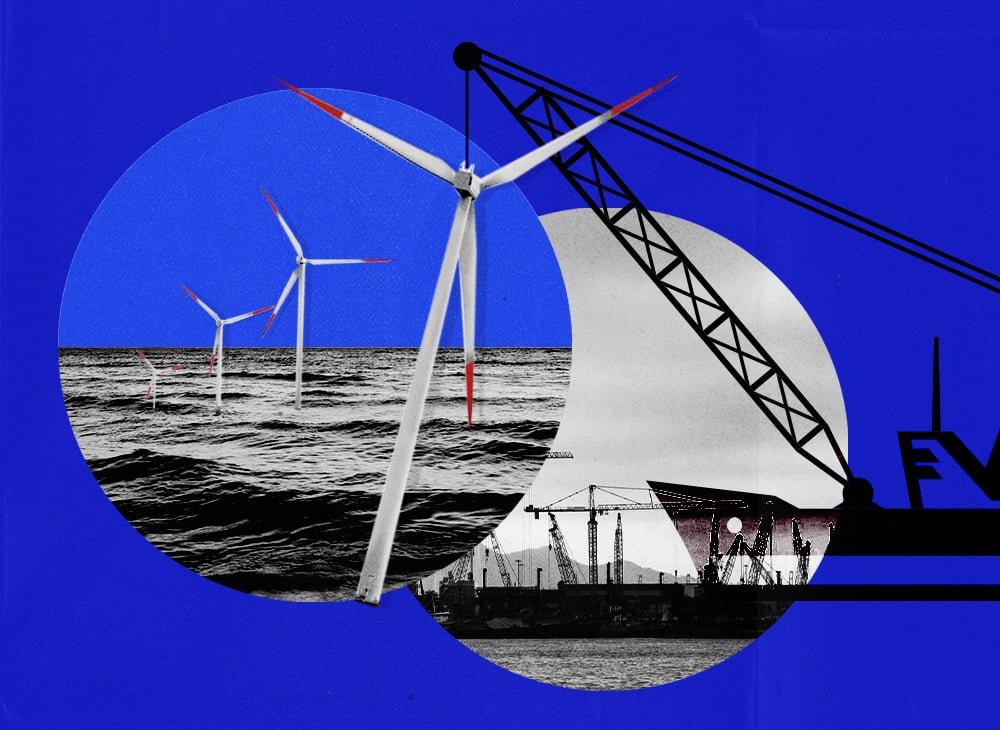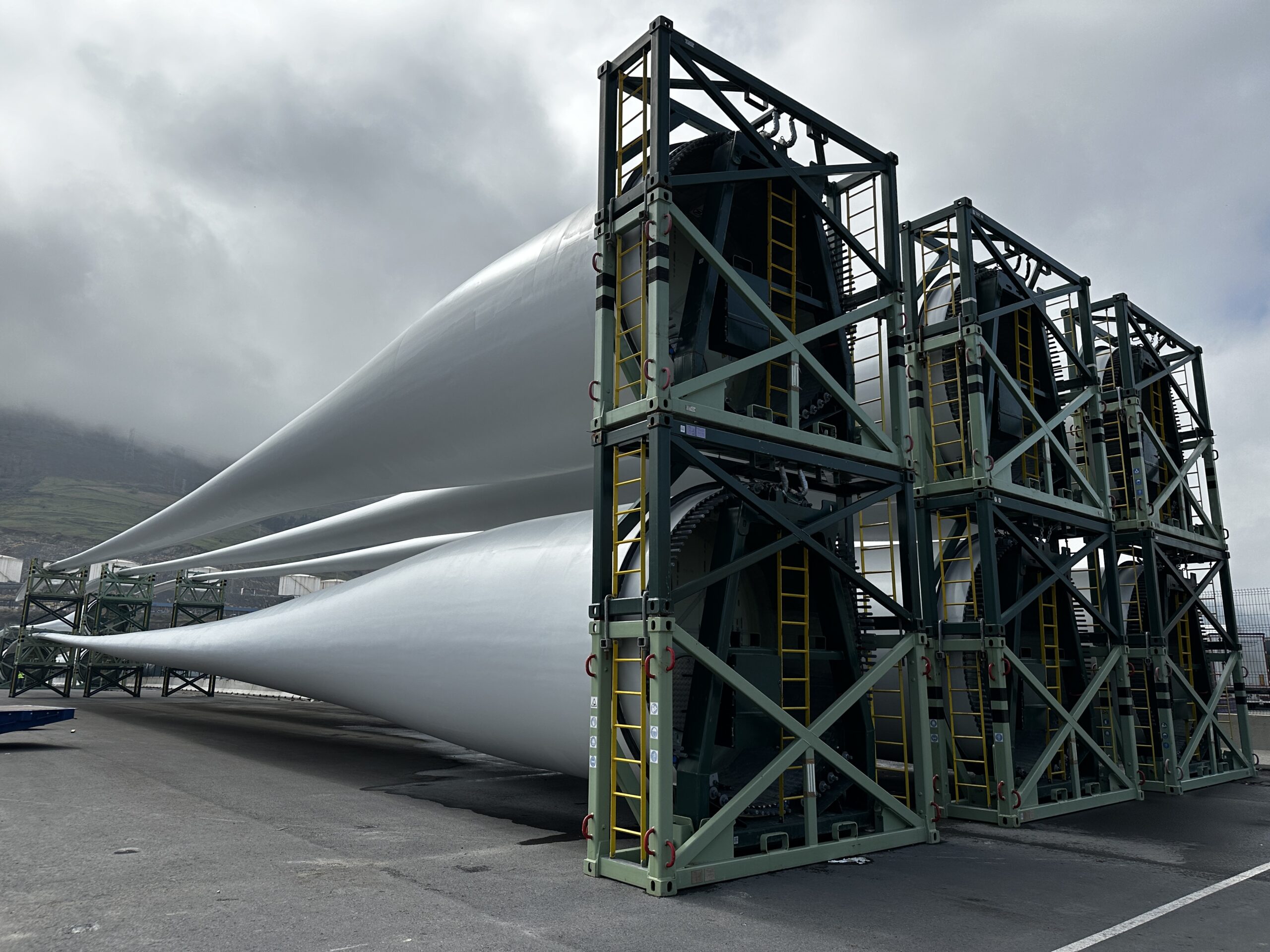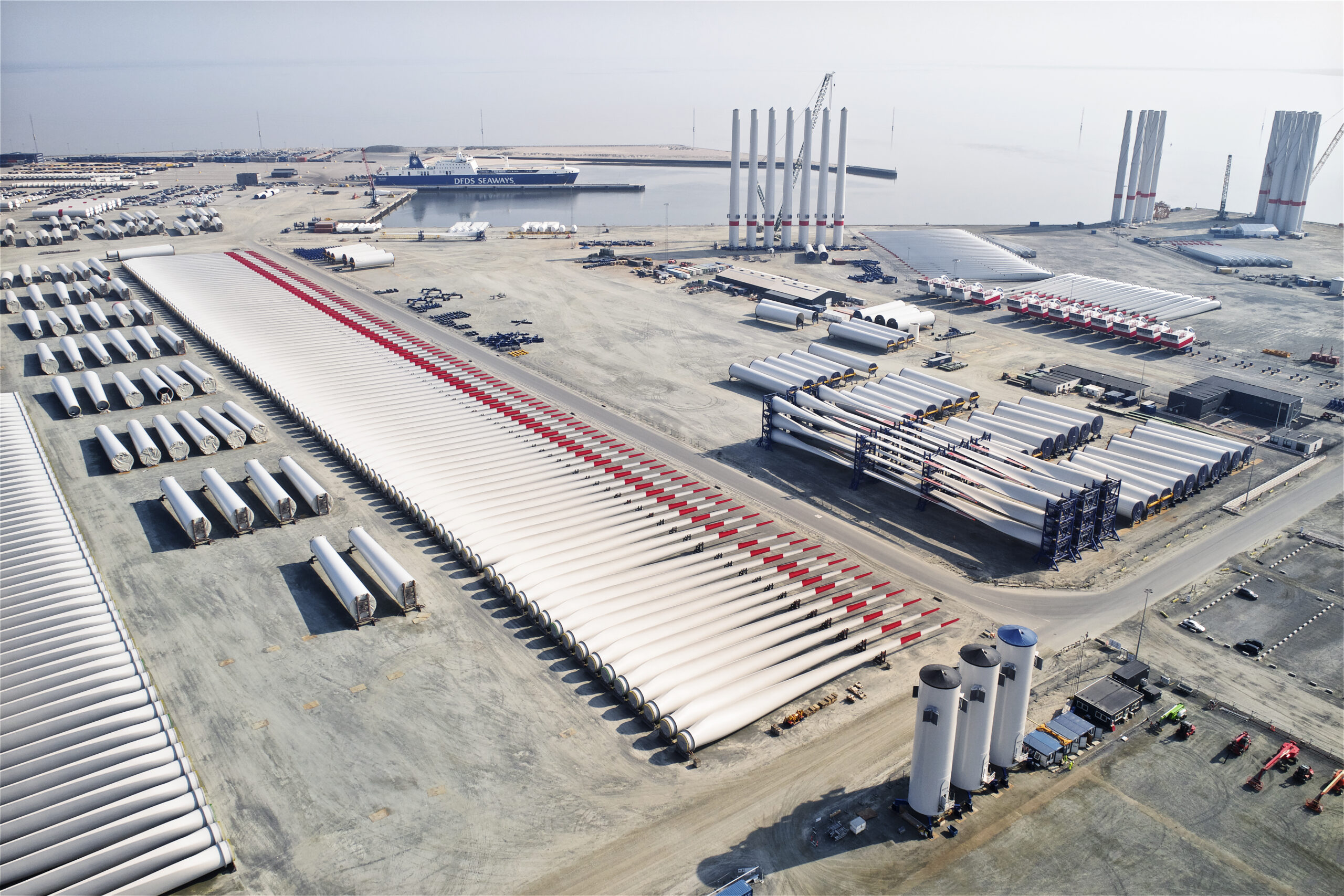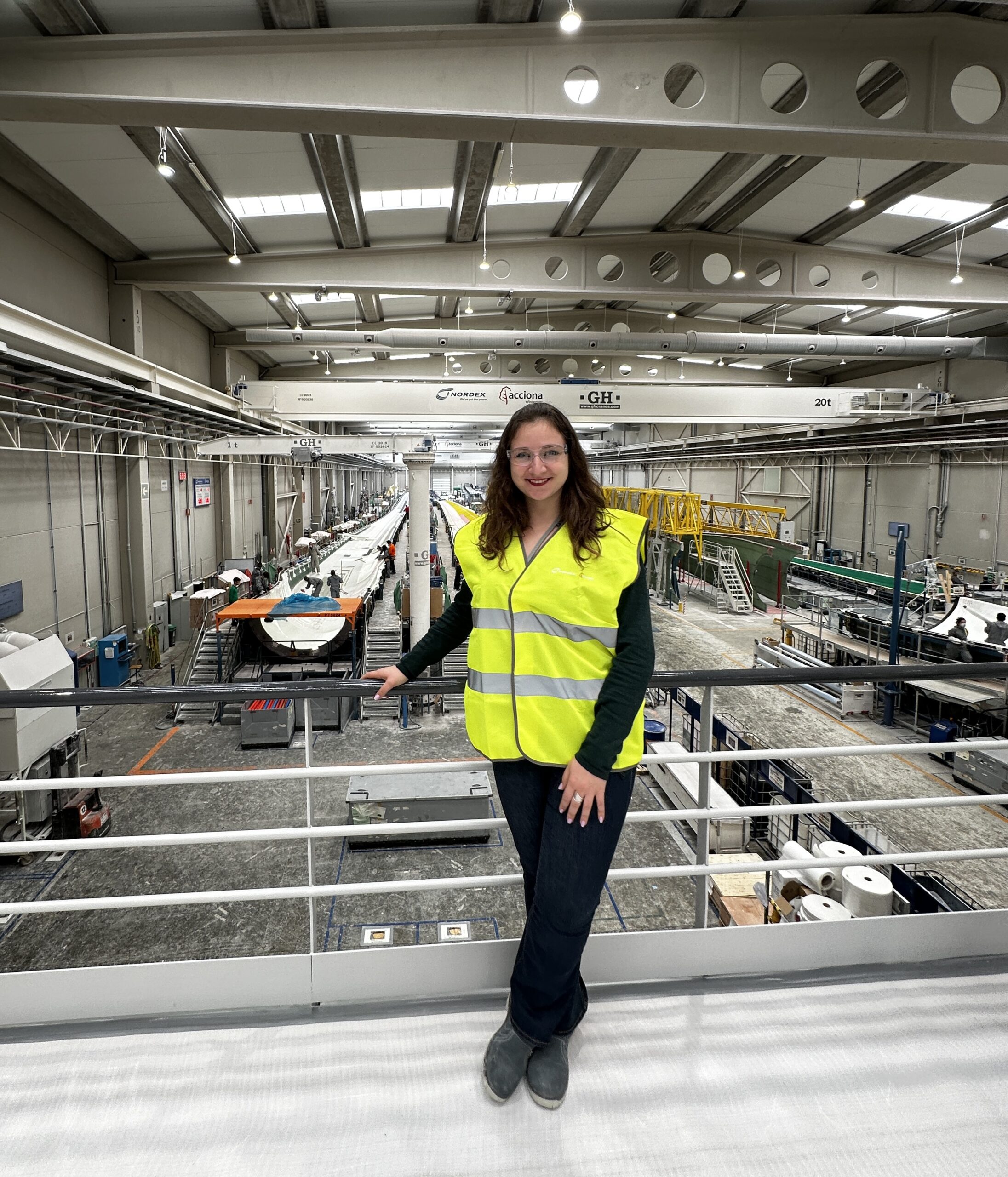Europe’s wind ambitions require a makeover for the ports
Latest News
BILBAO, Spain — Dozens of giant, white-coated wind blades are meticulously stacked across designated areas of an industrial port here in northern Spain. The areas are like parking spots for huge wind turbine components, the workers maneuvering around them tiny in comparison.
Some of these components will be shipped out to other regions of Europe, together becoming part of an increasing number of wind turbines dotting the continent’s fields and seas.
It’s a neat-looking setup, instilling a sense of order amid the massive port — 10 miles (17 kilometers) of docks alone — that buzzes with activity. But in a meeting room nearby, Andima Ormaetxe Bengoa, the port’s operations chief, warns of the pressures ports like his are facing to accommodate not only a growing volume of wind turbine parts but also exponentially bigger sizes.
“The efforts that are asked from ports are increasing day by day,” Ormaetxe, who also handles logistics and strategy at the Port Authority of Bilbao, said during a visit to the site in March. “The scale of [wind turbines] is growing enormously. This is stressing the ports because, of course, the infrastructure is not prepared.”
As the European Union is looking to significantly ramp up its wind installations in the coming years to meet climate targets, ports — an often-overlooked yet crucial part of the wind industry value chain — need to undergo significant makeovers to fulfill their growing role in the energy transition.
Indeed, the EU is at the leading edge of what will be a global challenge: Adapting and expanding ports to move around the massive pieces of infrastructure meant to help the world tackle climate change.
Wind turbines, with their ever-growing sizes and commercial deployment, are forcing these changes perhaps the fastest among new technologies in Europe. But change is also underway elsewhere.
The Port of Rotterdam in the Netherlands and the Port of Antwerp-Bruges in Belgium want to position themselves as hydrogen trading hubs for the region.
In the United States, states like Massachusetts and New York are beginning to pour money into port development, as the offshore wind industry there starts to grow. Many of the U.S. clean hydrogen production proposals are clustered near ports in Texas and Louisiana, with developers seeking to take advantage of the existing fossil-fuel infrastructure there.
Port makeovers require billions of dollars in investments and solving for space constraints, challenging ports’ traditional business models and their preparedness for a fast-changing cleantech industry.

Wind turbine blades stacked up in the Port of Bilbao in Spain. Photo credit: Anca Gurzu.
A study out last year commissioned by the Netherlands Enterprise Agency found the ambitious offshore wind goals of nine countries around the North Sea are at risk unless port development speeds up.
Those countries are committed to installing a combined 120 gigawatts (GW) of offshore wind by 2030, but the agency study found that even with currently planned expansions factored in, port capacity will not increase enough to match countries’ ambitions.
Germany alone would need the equivalent of an additional 270 soccer fields in the heavy-duty seaport space by 2029 to meet the country’s offshore wind ambitions, according to a recent industry study.
Such stark findings are getting increasing attention, with offshore wind developers and international renewables leaders warning the world must prioritize port developments to speed up the energy transition.
Not all ports are the same
Ports will need to transform how they do business — but they won’t all play the same role. Three examples stand out.
In Bilbao, traditional maritime traffic (such as shipments of petroleum, chemicals or foodstuff) continue to be an important part of the port’s business even as wind sector activities have increased in recent years.
The port hosts various plants that build everything from blades to wind tower sections and monopiles (the foundations that support the load) for both onshore and offshore wind turbines. This dual role of producer and exporter of wind turbine parts reflects the wider industrial cluster present in Spain’s Basque region.
“Bilbao has become the exit and entry point for the [wind turbine] sector,” Ormaetxe said. “We can see the full chain of the sector inside of our port.”
Meanwhile, in northern Europe, Denmark’s port of Esbjerg by the North Sea is the world’s largest port for offshore wind activities. It morphed from a Danish oil and gas service hub to a wind hub in the 2000s, mirroring the growth of offshore wind in the region. From Esbjerg, wind components are dispatched to be installed at sea or exported around the world.
“We have been involved in more than two-thirds of what is spinning in Europe at this point,” Jesper Bank, the chief commercial officer at Esbjerg Port, said during the same visit in northern Spain.
He clicks through a series of photos in a presentation showing an aerial view of gigantic offshore wind blades loaded onto massive ships or stacked neatly in a row at Port Esbjerg.

Various wind turbine components, such as blades and tower parts, are lined up in Denmark’s Esbjerg Port. Photo credit: Christer Holte/Esbjerg Port.
Bank said the photos, taken within the last few years, “are ready to go to a museum” because component sizes are increasing so rapidly. The blades and the towers will be longer, and the nacelles (which house the turbine’s electricity generating components) will be heavier. He points to an illustration of an Airbus A380, the world’s largest passenger plane at almost 240 feet (73 meters) long, as a point of reference for old and current wind blade sizes.
“Even just the blades of [today] are longer than the Airbus — no port is built for an Airbus,” he said.
Meanwhile in southern France, facing the Mediterranean Sea, Port la Nouvelle is set to jump a few steps in its metamorphosis to become a hub and producer of more novel wind technologies. It’s under expansion now to accommodate a floating wind pilot project, betting on a technology not yet commercially used.
Thomas Debize, an engineer working on the project, said a port dealing with floating offshore wind needs a different configuration than a port specializing in traditional offshore wind.
Offshore wind turbines today are assembled mostly at sea and fixed to the seabed floor. The port serves mainly as storage for the components, Debize said. Floating wind turbines, in contrast, need to be mostly constructed in the port’s sheltered waters before being taken out to sea.
Port la Nouvelle also plans to store and distribute hydrogen coming from the floating wind power, further expanding the port’s clean energy role.
Looking for certainty
WindEurope, the EU’s Brussels-based wind lobby group, forecasted the bloc will have a total installed wind capacity of almost 400 GW by 2030, up from 272 at the end of 2023. About two-thirds of that capacity will come from onshore wind, with offshore installations expected to pick up toward the end of the decade.
Ports will need investments of €8.5 billion by 2030 to see the bloc’s offshore wind ambitions through, the wind lobby also estimated.

Anca got to see how a wind blade comes together (see the inside of the two sides of the blade in the background) during a factory visit to manufacturing company Nordex in Navarre, Spain. Photo credit: Paulina Gorska.
Getting there won’t be easy.
Europe is now facing a “double whammy of bigger turbines needing bigger ports and more turbines requiring more ports,” said Chris Willow, head of the floating wind department at RWE Offshore Wind, a German wind developer. But “you can’t snap your fingers and suddenly have a new quayside,” he told Cipher, referring to the area by the water where cargo is loaded or unloaded.
The process of adapting a port’s infrastructure comes with challenges.
“A quay for offshore wind is not the same quay for loading and unloading normal bulk. This is not just putting some concrete on the floor,” said Isabelle Ryckbost, secretary general of the European Sea Ports Organisation. “It’s also an industry that will take quite some space in the port. We must be confident that this space will be there because Europe is quite full, let’s say.”
A related challenge is on the business front, considering wind turbines are not the only infrastructure ports handle.
“The question is, will these new industries generate a similar income for the port” compared to the more traditional model of importing and exporting goods, Ryckbost said.
The Dutch report published last year identified several bottlenecks in the development of port infrastructure, including uncertainty around whether governments’ wind ambitions will turn into concrete projects.
It flagged a “mismatch” of interests: “Delays in development of offshore wind port infrastructure do not directly affect the ports. It does, on the other hand, have major consequences for achieving offshore wind and climate goals.”
To resolve this mismatch, governments need to provide more certainty to ports that demand is coming, the report noted, and ensure the right financing, including subsidies.
To speed up port transformations, “governments may need to step in because there’s often a wider economic benefit to port infrastructure,” Willow said. “You start to get supply chain growth around that, jobs are created.”